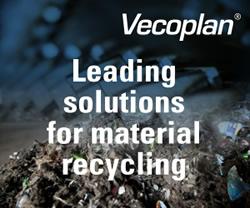We saw that by combining EV charging and solar production into one integrated solution, we could improve the way energy is produced and consumed. In addition, it made sense to embed an EV charger in an inverter as both verticals share similar customers.
Benefits of Combining EV Charger and PV Inverters
Q&A with Lior Handelsman, VP of Marketing & Product Strategy and Founder | SolarEdge Technologies
Tell us about SolarEdge products and the role in EV Charging.
SolarEdge’s belief that innovations help drive the PV industry forward is behind every product development that we bring to market. This view is what led to the company’s foundation and its first breakthrough, the DC optimized inverter. Continuing to propel us forward today, this outlook led to the development of our HD-Wave inverter technology, which significantly decreased inverter size and weight and achieved record efficiency. Today, we are continuing this tradition with our EV charging solar inverter. We saw that by combining EV charging and solar production into one integrated solution, we could improve the way energy is produced and consumed. In addition, it made sense to embed an EV charger in an inverter as both verticals share similar customers. This development is only one facet of our strategy to integrate more functionality into the inverter so that it can take on a much wider and more strategic role as a smart energy manager.
What technical developments are apparent in the EV charging solar inverter?
SolarEdge’s EV charging solar inverter is the first solution to integrate PV and EV charging into on piece of hardware. This integration enables users to power their EVs with solar energy, shrink their dependency on fossil fuels and reduce electricity bills. We did not stop at hardware integration, but took the technology a step further and developed a solar boost mode by using a dual power source concept that combines grid and PV power. Because the power combination occurs after the circuit breaker, charging rates can surpass the built-in limits of the circuit breaker and reach up to six times faster charging than a standard EV charger.
And how does it compare to other EV chargers on the market?
SolarEdge’s EV charging solar inverter surpasses competitive technologies in a number of ways. It is the only solution on the market that combines PV and EV charging into one piece of hardware. This means that unlike other EV chargers, it can use both solar and grid energy for charging with its solar boost mode, increasing charging rates by up to 6 times compared to the standard plug-in charger. Because the solution leverages solar energy, it offers a smart mode that uses excess solar energy to maximize self-consumption. In smart mode, the charger can also be set to charge exclusively from solar energy. Comparatively, standard EV chargers only focus on the need of the EV without taking into consideration any other energy goals, such as maximizing PV usage.
The hardware integration also offers several other advantages compared to other EV chargers on the market. There are hardware and labor cost savings, since no additional conduit, wiring, or breakers are required, and while most EV chargers require panel upgrades, SolarEdge’s solution virtually eliminates the need for an additional dedicated circuit breaker. This saves space and prevents a potential main distribution panel upgrade. There are also lower installation costs as it reduces the workload and upfront costs of installing a standalone EV charger and PV inverter. Lastly, SolarEdge’s EV charging inverter offers a warranty of 12 years (extendable to 20 or 25 years) in comparison to the industry standard for EV chargers of 1-4 years.
How does SolarEdge’s solar boost mode work?
SolarEdge’s solar boost mode works by simultaneously using grid and PV power for up to 6 times faster charging than a standard Level 1 charger. This is achieved by utilizing a dual power source concept, which combines inverter output and grid current only after the circuit breaker, thus allowing charging rates to surpass the built-it in limits of a lower circuit breaker while still complying with electrical standards and norms.
What are the benefits of combining EV charger and PV inverters?
First and foremost, using a renewable energy source instead of fossil fuels to charge EVs helps reduce dependency on fossil fuels and shrinks carbon footprints. Next, despite a significant overlap in goals and target markets, the EV and PV markets have existed as two independent verticals. By integrating the hardware, it helps to accelerate the adoption of both. In addition, combining these technologies improves system ROI through maximizing self-consumption and reducing upfront costs, thus making PV and EV more accessible to more people. At the individual level, users are able to manage and monitor their solar energy and EV from a single, easy-to-use app. While at the grid level, the integration also helps to decrease stress on the grid by using the intermittent supply of solar energy to support the unprecedented energy demand patterns from EVs.
What kind of feedback are you getting from Solar Installers? Are they able to capitalize on including EV charging in a Rooftop solar application?
Solar installers are excited to offer a product that helps them diversify and expand their business offering from rooftop PV applications to now include an EV charging solution. This can help them to differentiate their service offering and reach higher ASPs.
What are the common misconceptions regarding EVs and their impact on the environment?
There is widespread misconception about the environmental benefits of EVs. Many people move to EVs to be environmentally friendly; however, the carbon emission of an EV is only as good as its energy source. EVs charged by an electric grid powered by 100% coal actually have a larger carbon footprint than petrol- or diesel-powered cars. It is when EVs are charged with a renewable source, like solar, that they become truly sustainable, so solar charging is key to turning EV driving into a more sustainable alternative to conventional vehicles and to meeting government environmental goals.
Why do you feel combining solar and EV charging is so important for the growth of both solar and electric vehicles?
Both markets show no signs of slowing down. Solar capacity has increased by 300% in the past 5 years, and is expected to grow another 170% by 2025. Moreover, the EV market is expected to increase globally from one million EVs purchased in 2018 to ~20 million in 2030. The simultaneous growth of these two markets are causing significant strain on the grid – PV with its intermittent supply and duck curve and EV with its unprecedented demand patterns causing even steeper ramp-up times in the evening. We are already seeing calls from utilities to limit the amount of PV feed in and if EVs become the norm, it could push the total demand for electricity beyond existing grid capacity. If the penetration of EV and PV causes too much grid instability, it could potentially cause push back from the utility and slow down both of the markets. However, combining the two technologies provides a solution. 40% of EV owners also have a PV system, and since there is significant overlap between the EV and PV target market, charging EVs with solar could limit the effects of both to grid instability.
About Lior Handelsman
 Lior Handelsman founded SolarEdge in 2006 and currently serves as our Vice President of Marketing and Product Strategy in which he is responsible for defining and steering SolarEdge’s strategic global marketing activities, media outreach, product roadmap and vision, corporate product strategy, as well global product management, and corporate business development. Prior to founding SolarEdge, Mr. Handelsman spent 11 years leading power electronics research and development teams and directing large-scale, multidisciplinary research and development projects. Mr. Handelsman holds a B.S. in Electrical Engineering (cum laude) and an MBA from the Technion, Israel’s Institute of Technology.
Lior Handelsman founded SolarEdge in 2006 and currently serves as our Vice President of Marketing and Product Strategy in which he is responsible for defining and steering SolarEdge’s strategic global marketing activities, media outreach, product roadmap and vision, corporate product strategy, as well global product management, and corporate business development. Prior to founding SolarEdge, Mr. Handelsman spent 11 years leading power electronics research and development teams and directing large-scale, multidisciplinary research and development projects. Mr. Handelsman holds a B.S. in Electrical Engineering (cum laude) and an MBA from the Technion, Israel’s Institute of Technology.
The content & opinions in this article are the author’s and do not necessarily represent the views of AltEnergyMag
Comments (0)
This post does not have any comments. Be the first to leave a comment below.
Featured Product

